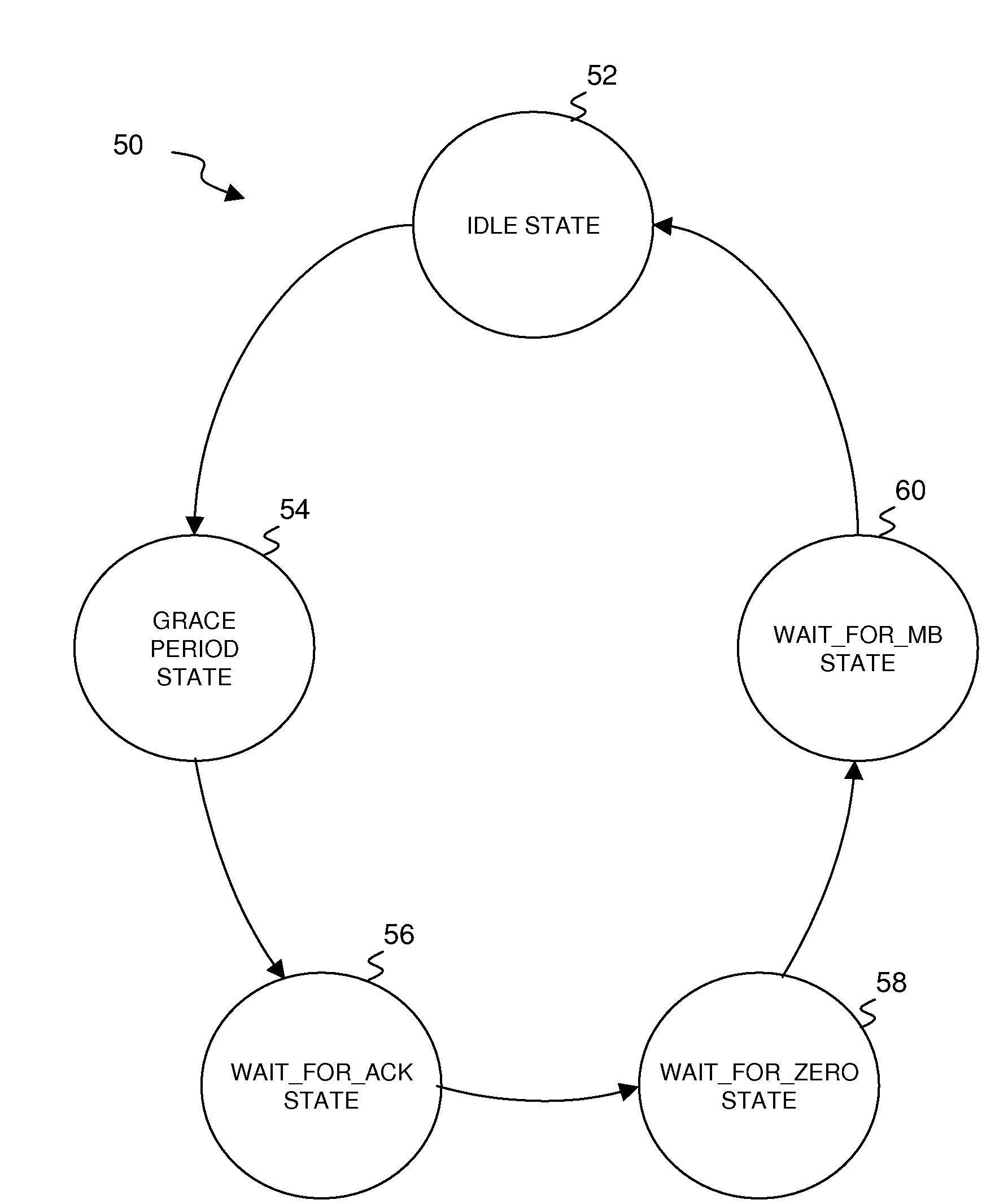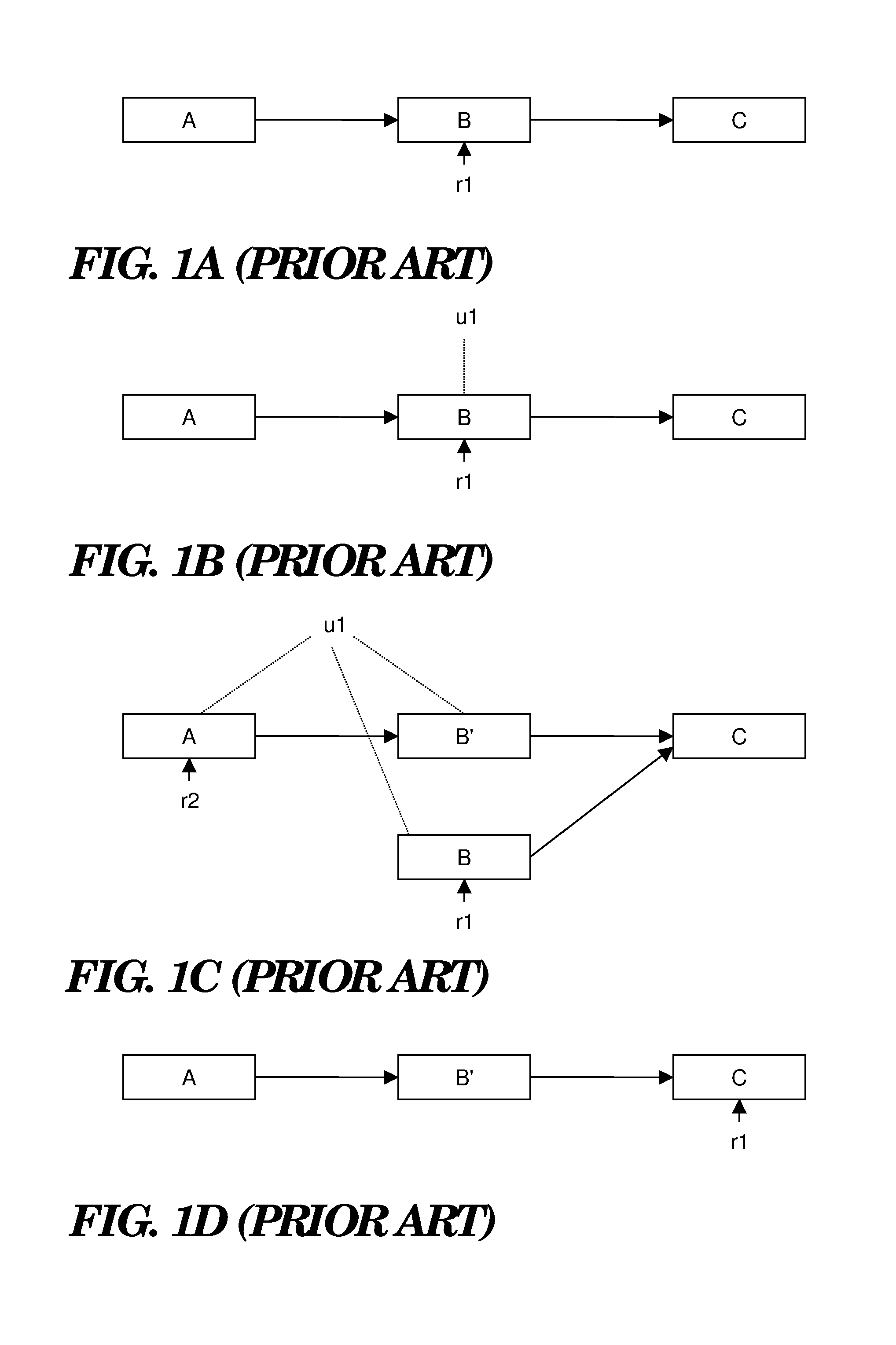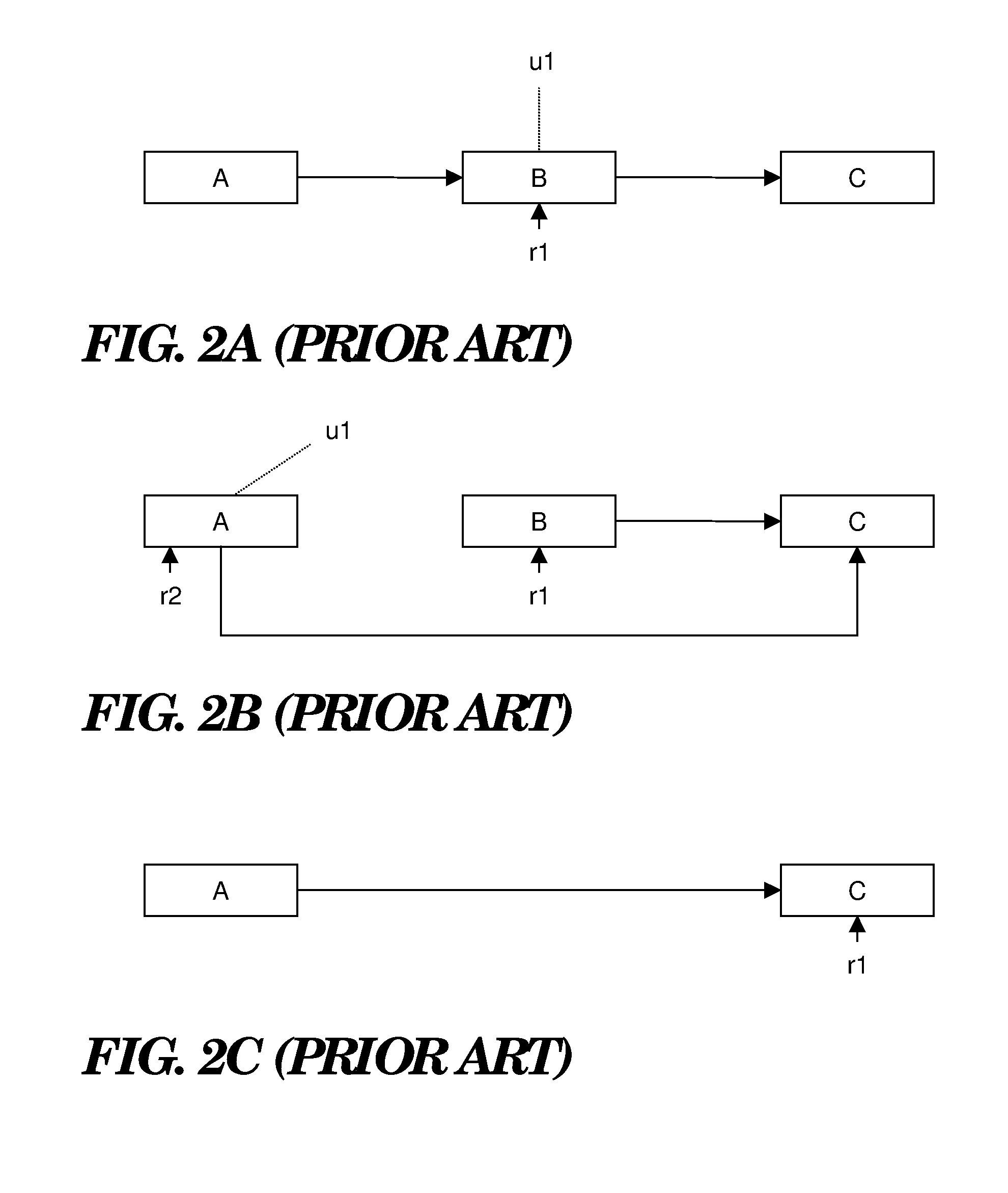Using Counter-Flip Acknowledge And Memory-Barrier Shoot-Down To Simplify Implementation of Read-Copy Update In Realtime Systems
- Summary
- Abstract
- Description
- Claims
- Application Information
AI Technical Summary
Benefits of technology
Problems solved by technology
Method used
Image
Examples
Embodiment Construction
[0031]Turning now to the figures, wherein like reference numerals represent like elements in all of the several views, FIG. 4 illustrates an exemplary computing environment in which the present invention may be implemented. In particular, a symmetrical multiprocessor (SMP) computing system 2 is shown in which multiple processors 41, 42 . . . 4n are connected by way of a common system bus 6 to a shared memory 8. Respectively associated with each processor 41, 42 . . . 4n is a conventional cache memory 101, 102 . . . 10n and a cache controller 121, 122 . . . 12n. A conventional memory controller 14 is associated with the shared memory 8. The computing system 2 is assumed to be under the management of a single multitasking operating system adapted for use in an SMP environment. In the alternative, a single processor computing environment could be used to implement the invention.
[0032]It is further assumed that update operations executed within kernel or user mode processes, threads, or...
PUM
 Login to View More
Login to View More Abstract
Description
Claims
Application Information
 Login to View More
Login to View More - R&D
- Intellectual Property
- Life Sciences
- Materials
- Tech Scout
- Unparalleled Data Quality
- Higher Quality Content
- 60% Fewer Hallucinations
Browse by: Latest US Patents, China's latest patents, Technical Efficacy Thesaurus, Application Domain, Technology Topic, Popular Technical Reports.
© 2025 PatSnap. All rights reserved.Legal|Privacy policy|Modern Slavery Act Transparency Statement|Sitemap|About US| Contact US: help@patsnap.com



